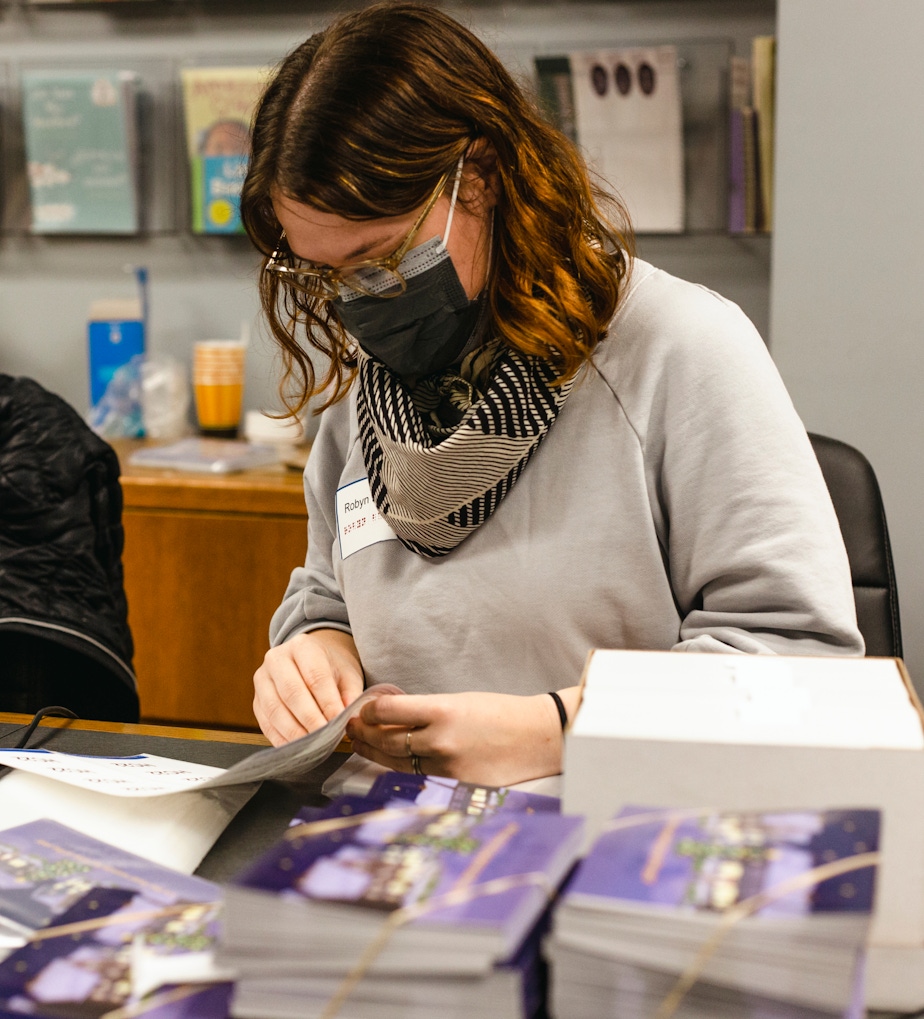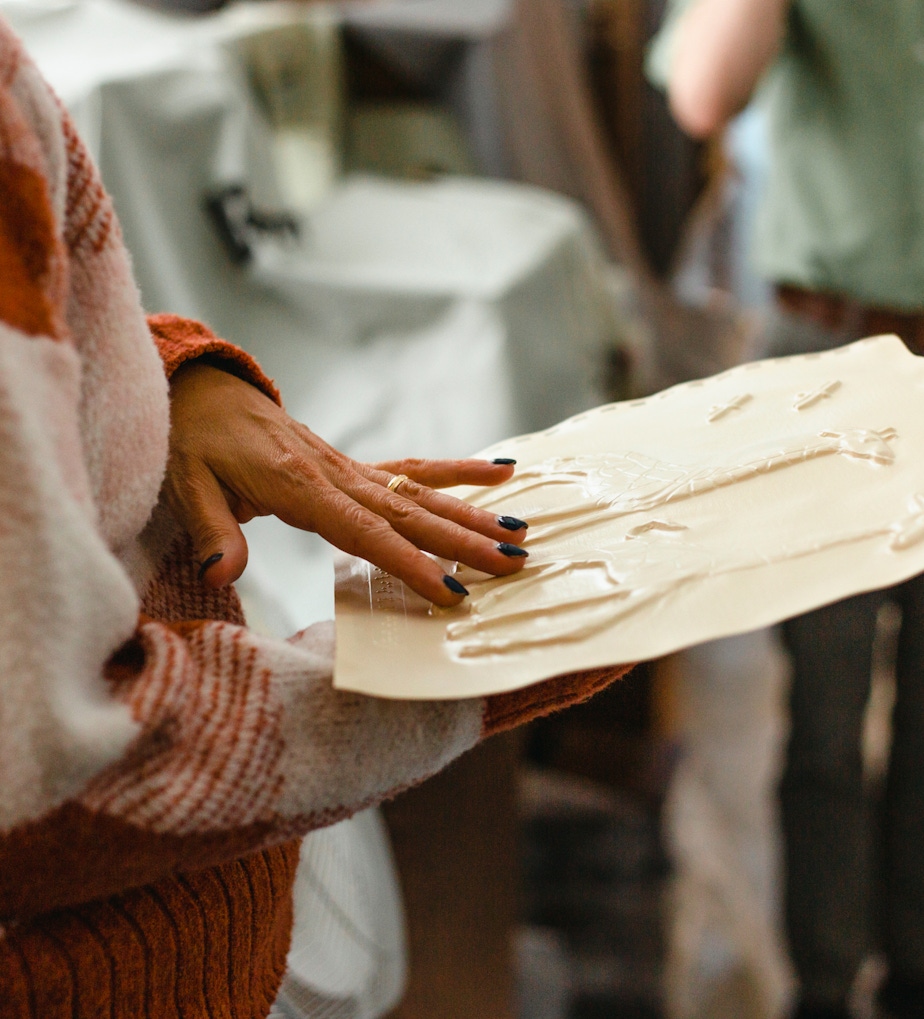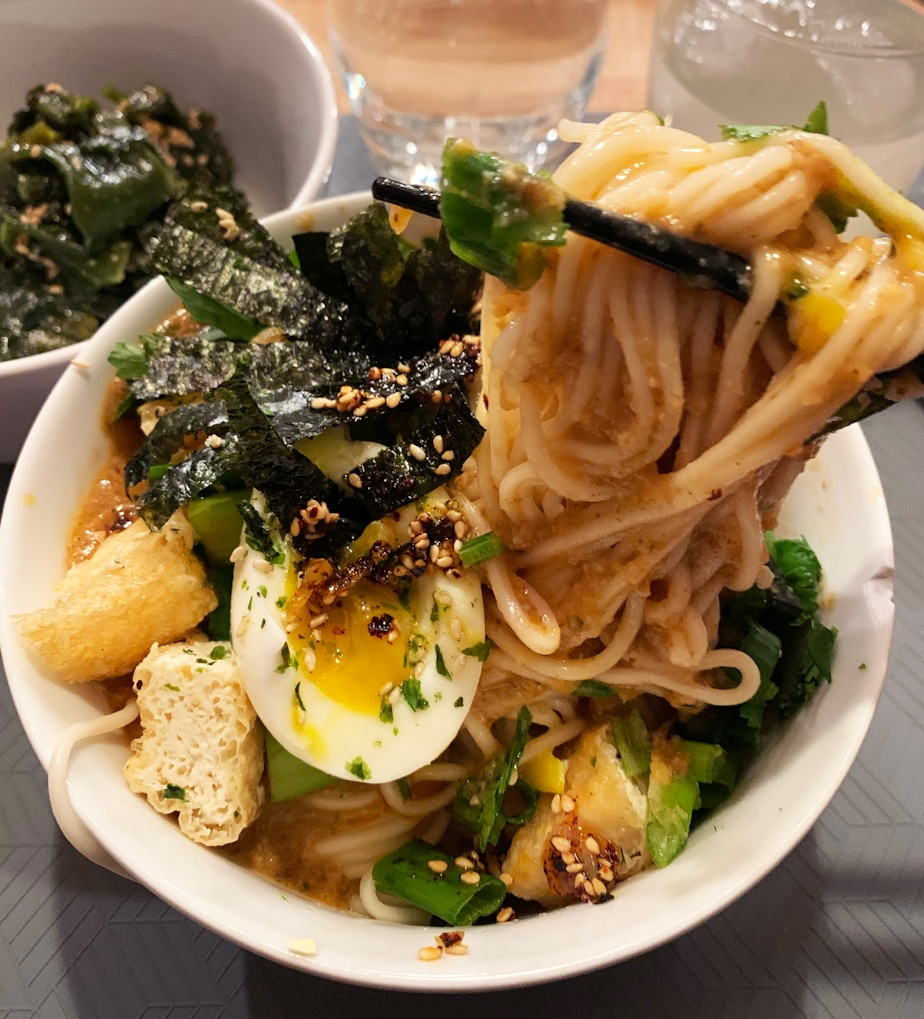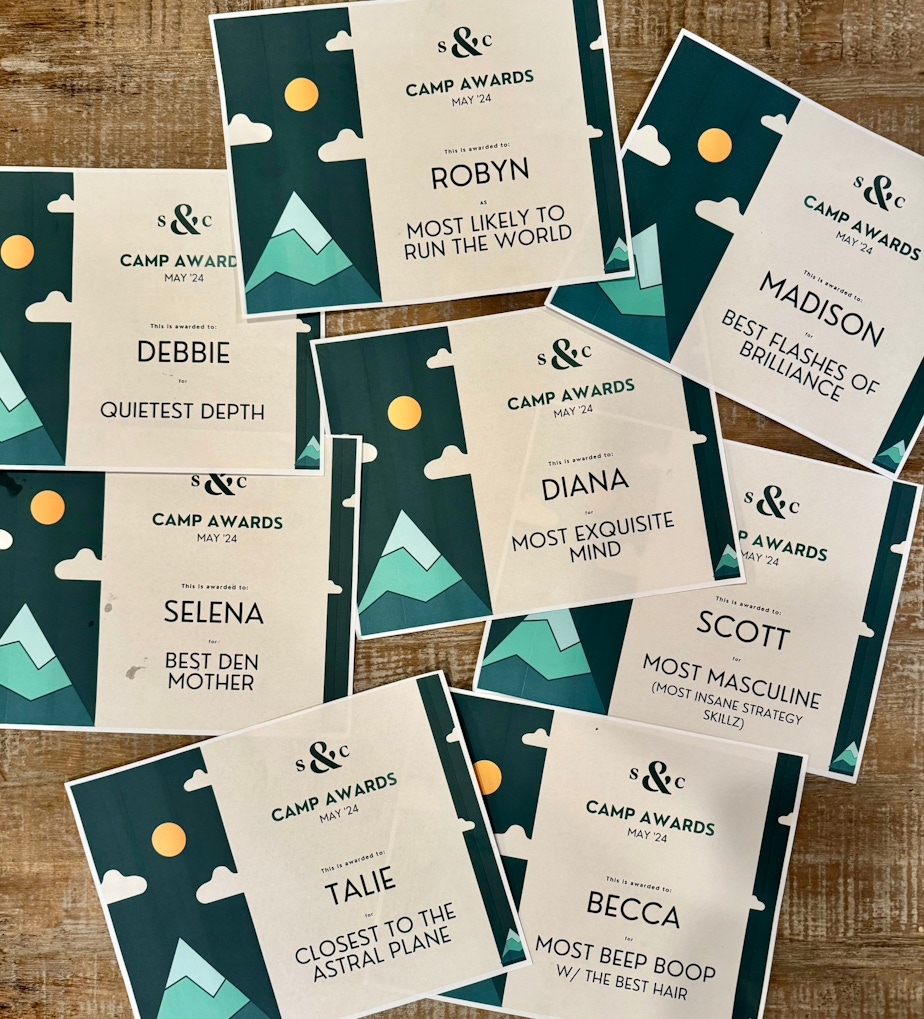By Scott Smith
August 19, 2024
We founded Smith & Connors with a people-first culture that emphasizes connection, growth and communication. We’ve always tried to live up to this value over the course of our 11 years. At first, we focused our energies on a great experience in the office. In 2020, like everyone else, we started working from home and looked for ways to build and sustain our company culture more intentionally.
We started doing twice-a-year, full-company retreats, which have become essential in keeping our team and business aligned and humming. We love that #WFHlife, but it can be challenging. These retreats create a space to build community and trust and work on the business together.
Right before we created these retreats, our beloved S&C book club (RIP, too busy) read The Five Dysfunctions of a Team together. This book, which has become required reading for any new team member, still continues to be valuable as a guide to building the culture we want, and we practice its ideas during our retreats. In fact, we based our initial retreat goals and activities on its concepts.
Our retreats have proven to be transformative. Clients and colleagues have asked what we do that makes us so excited. So in this post, we're sharing a bit about how we plan and run the retreats. We believe this topic is crucial to a successful team, and we love talking about it!
Why So Essential?
Remote work is great, we'll be the first to champion it. We can be with our furry and non-furry companions, we can cook in the middle of the day, take naps where needed. But Slack and Zoom meetings don’t replace breaking bread with people or building relationships by simply sharing the same space.
That’s why our retreats are so important. Each time we meet is an opportunity for us to connect on personal levels, refining and reinforcing the bonds that make our team strong. By coming together in person, we cultivate deeper appreciation and understanding for one another, which translates to a more cohesive team dynamic and creates community.
It's Not Just Work
During these retreats, we select 2–3 significant business goals to workshop together. We’re constantly improving our services and products this way, redefining how we work together and with our clients. By focusing on just a few key goals, we can dig deep and find our flow through collective brainstorming and problem-solving.
At the same time, and just as important, the retreats prioritize self-care. Agency life can be hectic, and our retreats offer a chance to rest, reset, and rejuvenate. We blend our work sessions and professional goals with fun outings and culinary experiences, such as going to a nice restaurant together. Food is community. We cook together, and serve each other. This holistic approach ensures that we return to our daily routines, not only with fresh ideas and strategies, but also with renewed energy and a stronger sense of community.


How do our retreats work?
The Five Dysfunctions of a Team, by Patrick Lencioni, is written as a narrative, a sort of parable about a leadership team in turmoil and the work they do to come together to become a cohesive team with collective goals. I can’t stress how important the ideas in this book are to us. Lencioni frames the difficulties in teams as a pyramid. You need to tackle each one in turn as a basis for looking at the next. The most fundamental dysfunction is the absence of trust. If you don’t build trust (through vulnerability), you can’t have productive conflict without worrying you’ll be at risk. Without productive conflict, you can’t have true commitment to the mission. Solve that and you can deal with avoidance of accountability, and then finally inattention to results.
Again, this framework has been so influential to us that we got to thinking about the power of this kind of alignment in our experience with clients, which fed into our concept of Design Therapy. That’s where we help our clients surface and work through issues as a group to find alignment.
Personal Shares & Updates
The goal is to end the week with all of us metaphorically facing the same direction. To ensure that we’re truly digging deep and forming trust, we ask every team member to be vulnerable. We start the retreats by honestly sharing both professional and personal challenges, failures we’re struggling with and places where things are going well.
In our business culture, we view failure as something to learn and grow from, and we practice this during our retreats by participating in vulnerability exercises and shares. At the beginning of every retreat, each person has 7 minutes to voice how they are doing and what they need. It’s a listening exercise, so no input from others is allowed during shares, and all judgment is withheld and discouraged. Here’s an example of the notes from one share from Talie:

Resonating Without Advising
Once everyone takes a turn, we do a round of resonating. We don’t offer advice to people. We just demonstrate that we’ve heard people, that we share some of the same very human issues, and that we’re here. We see each other, and we don’t judge. But we’re working with each other, and we rely on each other. We need to know what we’re all going through so we can be there and offer each other grace.
Starting our retreat by connecting as human beings and taking risks builds trust and sets the rest of the retreat up for honesty and bonding. We believe that good leadership is about allowing people to innovate and fail, and with that, new ideas and real bravery and courage blossom across the team. We encourage learning from mistakes, and to do that, we need to meet at the human level and allow ourselves to be able to fail in front of each other.
Psychological Safety
Perhaps even more important is that this creates psychological safety at work. You can say you’re struggling with stuff, and be as specific or nonspecific as you want, and people are still going to be there seeing you as a smart, resourceful human being. That goes a long way.
We also recognize that this can be challenging and that trust is built over time, so we make sure that leadership sets an example of being vulnerable and sharing their experiences whenever possible. This helps set the right tone in our culture and encourages others to express honest vulnerability as well. And people can go only as far as they want.
Intentional Reconnection
Then we get into our agenda, which is a mix of retreat activities, meetings, heads down time, volunteer time, and outdoor activities. Each team member is assigned a specific meal, research, or prep assignment, so all the tasks are handled across the team.
These retreats are truly a collaborative whole-team effort. Our business work is split into different sessions. In each one, a team member leads and facilitates the session. We believe that fixing and advancing the business should be a full team effort. We use our own experience to train up and help each other facilitate the sessions.
We’ve got people in California, Texas, Massachusetts, and Oregon. We’ve done the retreat in the home cities of partners or in a neutral location, but wherever we go, we try to find volunteer activities for our team to spend time bonding and connecting while we do something helpful for that community.
At the end of each retreat, we do a reflection, and then we have our own silly camp awards as another way to recognize and appreciate each person and have fun!


It Makes a Difference
By investing in our culture and team, we create a more joyful and safe environment for our people, which means a better experience both internally and for our clients. Throughout our retreat journeys, we identify blockers within our work and identify significant goals that bring us closer to achieving our yearly objectives.
Our business thrives and runs more smoothly with these retreats. We aim to celebrate and encourage each other, giving the opportunity to take risks and learn from each other. The retreats allow us to be goofy and human together, strengthening our bond as a team.
Our retreats are crucial to the success of our business. They push forward our commitment to a people-first culture. By nurturing connection, being vulnerable, celebrating achievements, and addressing conflicts, we ensure that our team is aligned, motivated, and ready to tackle the challenges that will potentially come our way.
If you are curious about our approach, want more information, or have ideas to share, please reach out! We believe in the power of connection and are always eager to discuss ways to enhance it.
